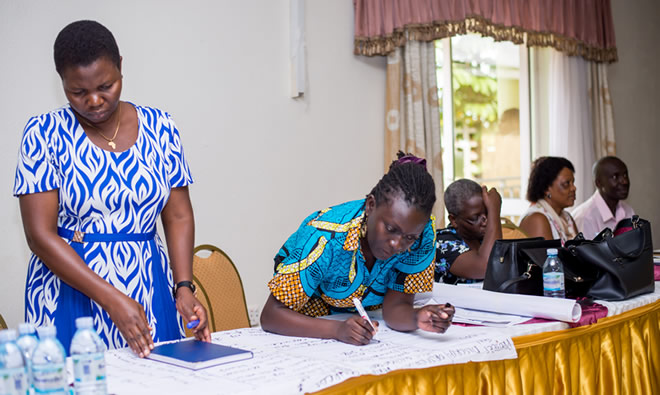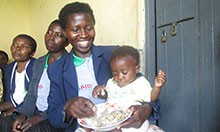
The Health Tutors’ College of Mulago (HTCM) developed and integrated a module on anemia prevention and control interventions into their three-year Bachelor of Medical Education degree program, with SPRING/Uganda’s support. Starting in the 2018/2019 academic year, the new curriculum will equip health tutors (teachers in health training institutions) with essential competencies on anemia and the capacity to transfer these competencies to their trainees.
HTCM is the only college in Uganda that trains health tutors for mid-level health care providers who are directly responsible for community health promotion. This module will benefit pre-service and in-service health tutors in 73 health training institutions for nurses and midwives and 41 allied health training institutions.
The availability of competent health workers in the prevention and control of anemia is a critical factor for the effective delivery of necessary anemia-related education and program services. In Uganda, anemia affects more than half of children under five years of age and a third of women of reproductive age, according to the preliminary results of the 2016 Uganda Demographic Health Survey.
Keren Carol Drateru, the principal at Health Tutors’ College of Mulago says, “What I like about the module is that it is intended to train health workers at both community and health facility levels. This is important because some people in the community for one reason or another do not go to health facilities.”
She adds, “The [national] occurrence of anemia is high. If health workers are educated about it, the number of people suffering with anemia will be reduced, since they will be equipped on how to assess, diagnosis, and therefore help control and prevent anemia-related outcomes.”
The module was developed in collaboration with the Ministry of Education and Sports, the National Anemia Working Group, and other stakeholders. Given its multiplier effect, it will go a long way in promoting SPRING’s overall goal of reducing undernutrition, preventing stunting, and reducing anemia among women and children.
